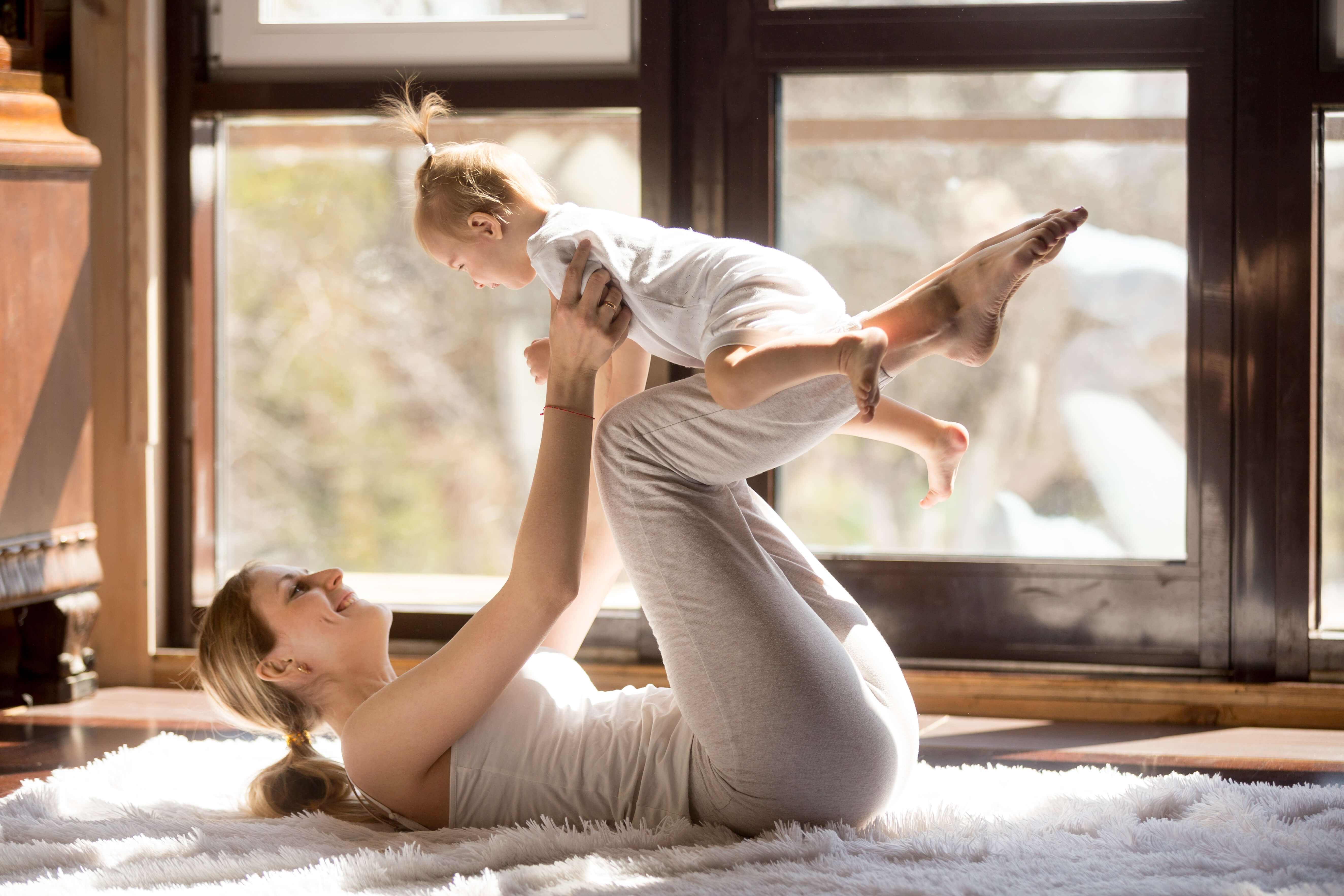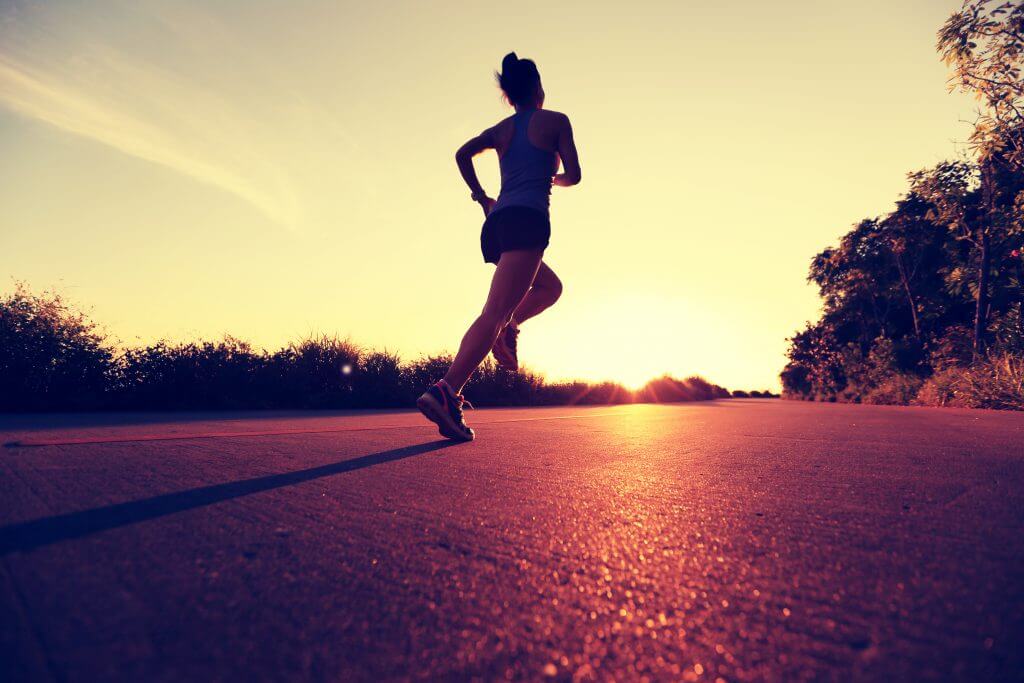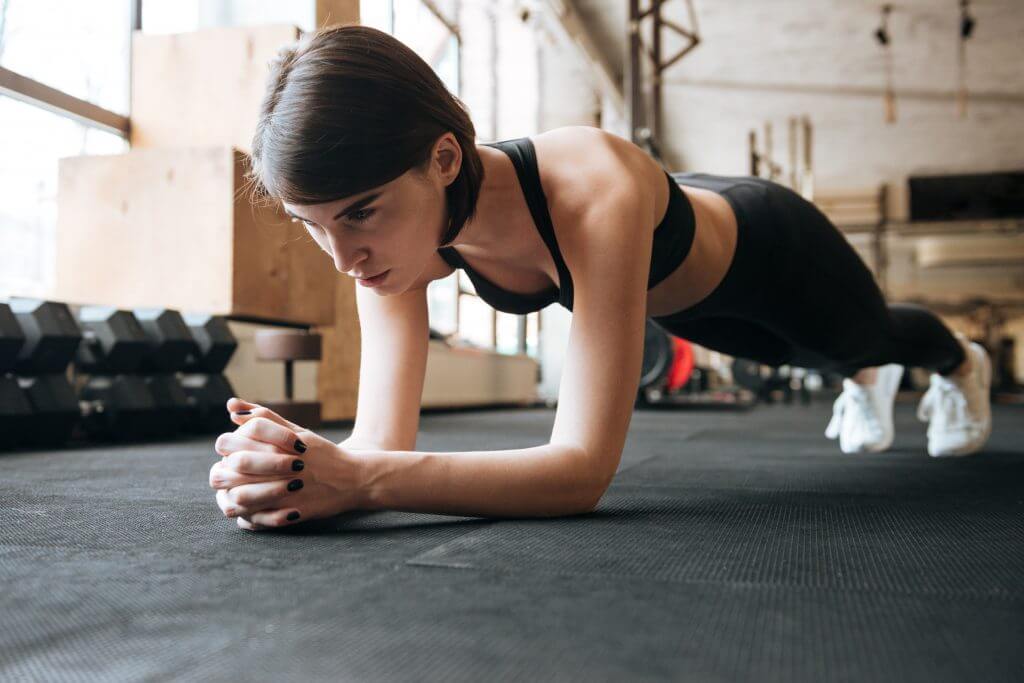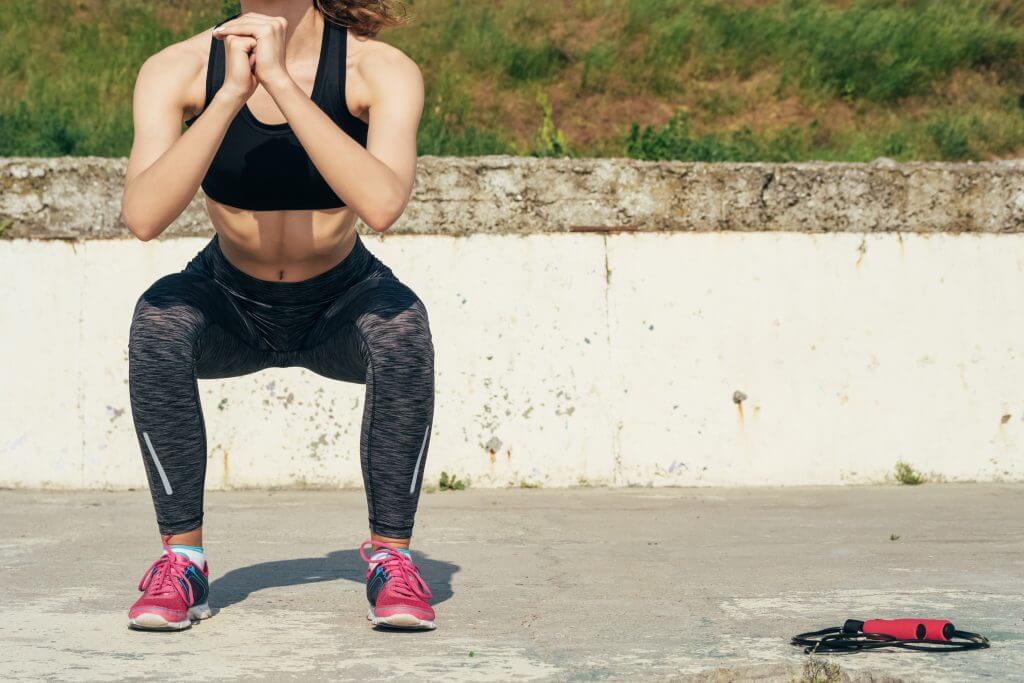
Starting an exercise routine can be tough. There are a lot more moving parts in your day now as a new mum, with constant feeding times and sleep patterns being thrown out of the window. However with strength I bet you showed during pregnancy and child birth you are tough enough to make this happen!
Let’s talk about some of the changes to your body after 9 months of carrying a baby and how this effects posture and the inner workings of the core. Before we get started though, please be sure you have consulted with your doctor to ensure you are ready to commence a training regime.
All pregnancies are different. Only you and your doctor know if you are ready. There is no reason to rush into training; you and your body have been through a lot. I like to refer to the Postnatal Phase of training as your ‘Fourth Trimester” as just as much care should be taken during this time as the other three. During this time, there is still a lot going on hormonally not to mention the healing process is still underway.
Coupled with an exercise programme that’s right for you and adopting a sensible diet, the best thing you can do is be kind and be patient with yourself.
Take care and gradually increase your workouts

After a long 9 months of pregnancy and maternity wear, most new mums want to jump right into exercise and get rid of the excess baby weight immediately after the 6 week no activity zone immediately after the birth.
This general 6-week guideline is given because there are obviously some massive changes to the body during pregnancy from complex hormonal changes to shifts in the way you move that effect posture and even tying your shoelaces. These changes persist and settle 4-6 weeks during postnatal along with the risk of haemorrhaging.
The most common question I get from new mums is “Where do I start?”.
This is complex question to answer, as there are a lot of variables, for example:
- Did you have a C-Section?
- Did you exercise throughout your pregnancy?
- What level of Diastasis Recti (abdominal separation) did you experience?
The list goes on.
The easiest answer is to start where you left off working out in the third trimester and gradually increase the volume and intensity of the workout over a period of time.
It is important you begin each session by taking a few minutes to get in tune with your body in terms of how you are feeling and adjust the workout accordingly. It’s a tough question to ask because we don’t want to push it too far, but we also don’t want the fatigue and tiredness to become an excuse to not do anything. In my experience, it’s the mums that get straight into a routine early on post birth that see lasting lifelong results.
It can be much harder to adjust your behaviours to incorporate exercise after not exercising for 3-4 years and then trying to fit exercise in your daily routine. Life as a mum with a newborn can be extremely exhausting and even more so if you have older children at home, which does not allow you to have any time to yourself. This is where a good understanding of your current health and fitness condition is key. Setting the correct intensity of your session is so important.
With so much happening in daily life you need to find that balance of exercise challenges you but you need to leaving the gym refreshed and regenerated not limping.
Re-learn deep core activation

Learning (or re-learning) how to connect deep core muscles is an absolute must for you as a postnatal mum. Whether you experienced diastasis recti (abdominal separation) or your abdominals/core are stretched and weak, you need to take your time to slowly strengthen and return to normal. It’s even possible for you to have a stronger core after baby then before, but it will take time
I like to think of the core as a Coke can, but for this analogy let’s say its Diet Coke as we don’t need the extra calories 🙂
The muscles of “Major” Core are as follows:
-
Pelvic Floor Muscles
Think of this as the base of the Coke can. A strong Pelvic Floor goes a long way to prevent Urinary incontinence which is very very common postnatal.
-
Transverse Abdominals (TVA)
These are deep walls on the front and side of the Coke Can. They provide Thoracis Support and Pelvic Stability and one of the primary muscles involved with delivering your little one. The biggest function where ‘looking good’ is concerned is that TVA draws in and compresses all our viscera. In layman’s terms and sorry to be crude, it sucks in our guts giving the hour glass figure that so many women want to get back after birth.
-
Multifdus
This guy basically flls in the gaps between the bony processes of the vertebrae and are responsible for stability of the spine. With all the elastin released during pregnancy (a chemical that improves flexibility in joints) the joints around the spine get weak and lose. This little guy is one of the reasons you are probably still feeling back pain. If we have back pain, we can’t train properly, if we can’t train properly, losing the baby weight is going to tough!
-
Erector Spinae and Longissimus
Some of it is muscle and some of it is tendon. It’s a bundle of mass that runs either side of the spine that is put under immense pressure during pregnancy another source of back pain due to the weight in the stomach area that pulls your posture forward.
-
Diaphragm
This is the lid of the Coke Can.The Diaphragm is responsible for drawing air deep into the lungs and area that tends to ‘go to sleep’ during pregnancy as it has not place to move. Learning how to Diaphragmatically breathe will instantly improve your fitness levels as the amount of air you can take in will increase massively. Air = Fitness.
-
Obliques
These guys work with the Diaphragm but work in the opposite direction. The Diaphragm makes room for the lungs to bring are in. The Obliques, among other things, help push the air back out.
The correct posture and alignment has the ability to make you look 5kg lighter. For example, now we know the job of the TVA is to ‘suck’ everything in and reduce waist size engaging these muscles will bring about that hourglass physique not to mention the functional benefits.
As I briefly pointed out the first thing most people want to do when they feel they can exercise again is do 300 crunches again, but this will do absolutely nothing apart from exacerbate current injuries in the back and neck.
Crunches do not burn fat and our focus needs to be working from the deep layers of the core first. Our deep core needs to be strong and fully functioning and it’s been through a lot. Getting back to the Diet Coke Can. Have you ever tried to crush and empty Coke can? Pretty simple, right? I bet you could do it with one hand. This is a pretty good representation of woman’s core post child.
The can in intact with walls sides, front, back and lid in the right positions but it isn’t sealed. There is no strength or integrity in the unit because it’s been opened. Have you ever tried to crush an unopened Coke Can when its full? It’s nearly impossible.
How to activate the core
Step 1. Neutral Spine
A term you will hear a lot in the gym is Neutral Spine. Its is very important to not only be aware of, but to make sure you are always operating in the Neutral Spine Position. The best way to get into position when you are by yourself is to lay down on the floor on your back. Bend your legs and make sure the soles of your feet are flat on the floor and above all you are comfortable in this position.
To check neutral spine, you should be able slip the palm (facing the floor) of your hand between the floor and the curve in your lower back. It should be a snug fit. In Neutral Spine position your lower back should not be flat on the ground nor curved out like the Sydney Harbour Bridge.
Step 2. Diaphragmatic Breathing
The piece of this puzzle is to relearn how to breath properly. Believe it or not over these years, pregnant or not, we forget how to breathe properly. I do realise how ridiculous that sounds as you are doing it right now! But if you are reading this eBook at your PC this is the exact reason we have learned this ‘faulty’ breathing pattern.
As you sit the lid of the Coke can, the Diaphragm is unable to its job of pushing down our viscera (guts) to make room for the air coming into our lungs. Other muscles take over and do the leg work. If you have ever had a stitch in your neck or shoulder area this is the little guy doing most of the work.
Whilst laying on your back with one hand (palm) down between the floor and perfect Neutral Spine position place the other hand over your belly. This sounds like the easiest exercise in the world but it’s a bit tricky for most. Take a big breath in “flling the belly” with air. The goal here is for our belly to rise with every deep breath in and for it to fall with every breath out. This will feel quite odd for a while but we want to move away from our shoulders rising and falling when we breath (remember that stitch in the neck) and revert back to the way were built to breathe.
This process can also be quite meditative which is great on several levels. Meditation has massive health benefts along with strong links through numerous studies show the relationship between meditation and fat loss, but that’s a whole other eBook.
Step 3: Stop the flow
After you have mastered the Diaphragmatic Breathing (if you haven’t, please wait until you get it right) let’s get our pelvic floor activated. Take that full breath in with the hands remaining in the same position as outlined in the previous steps. At the end of the ‘breath in’ phase I want you imagine that you are trying to ‘turn off’ going to the toilet ‘mid-stream’ and hold it as you exhale fully. As you exhale, you will feel all other areas of the core turning on through this motion.
Strengthen and stretch your back

This next point goes against traditional wisdom but we need to sort out the back first. This seems strange I know, as all we tend to look at in the mirror is your front. You feel like most of the baby weight was put on in front so that is where we need to focus. I need you to trust me on this, if we fix the stuff out with your back you will look a million bucks again a million times quicker than if you just focus on your belly.
Pregnancy, in most cases, causes poor posture and now that you are at home home holding your newborn all day and most likely nursing, you will find yourself constantly in a forward curved position.
Stand in front of your mirror. If you have a full length mirror this works best and do it in a crop top or bathers so you can see what is going on. You will notice a difference in your posture and shape compared to prior to giving birth for the frist time. When facing side on to the mirror, the frst thing you will notice is that you have a new shoulder position. You will fnd they have rolled forward.
This happens for a few reasons:
- The extra weight to the chest from carrying breast milk.
- Being in a constant cuddle position with our shoulder blades rounded out. The second thing you may notice is a bit of a duck butt. Again, sorry about the language, it just makes a bit more sense than if I were to say “Exaggerated Lumbar Curve”.
This happens for several reasons:
- With up 12kg of weight gain just in the belly region the hip position moves just to keep you balanced and upright.
- Massive amounts of Relaxin released into joints and the joints around the spine and hips become super mobile.
- As the foetus grows, it stretches the integrity of the Deep Core (as we have already discussed) the core provides strength and support to all the joints in the trunk and without it these massive postural changes occur.
Now turning face on to the mirror I’d like to show you how changes to your posture can make amazing changes to how you look, and feel for the matter. Complete the following steps:
Shoulder Position
- Pull the shoulders back like you are pinching a pencil between your shoulder blades.
- Be sure not to be raising your shoulders toward your ears.
- Stand tall with your head high aiming to be an inch taller
- Be sure not to raise the lower ribcage too high or this will have a negative effect on the next step.
Hip Position
- Tuck your hips under into a Neutral Spine Position
- You should be a pro at finding “Neutral Spine” by now. This time we are just doing it standing.
- If you are struggling with this, take a few steps backward until you have your back against the bathroom wall and follow the same process as you would when laying down on the floor as discussed earlier.
- Remember, we only want one hand snug between our back and the wall. If there is too much room back, there it is one of two things:
» The hips are not tucked under enough.
» We have lifted our lower rib cage too much in an effort to pull our shoulder blades back.
Diaphragmatically Breathe
- Follow the same steps as earlier:
» Breath in, the belly should pop out.
» As we exhale, “stop the flow”
» Repeat
This is a simple exercise, when you have a good understanding of your position in space and when you can nail the Neutral Spine and Diaphragmatically breathe on cue you can do these anywhere.
It’s simple yet can have a massive effect on your body. Simply set yourself in the correct posture and hold for 5-10 large breaths through the Diaphragm. When that becomes easy, increase the duration.
Strengthen your back
There is so much that contributes to good and bad posture but in a very basic sense it just means that one side of you is very tight and the opposing side is very loose. Let’s look at the forward shoulder position.
If the shoulders are pulling forward that means the chest is tight. What is the opposite to the chest? You guessed it, it’s the back. In almost all cases postnatal we should do 3 times the amount of exercise to strengthen your back vs. strengthening your chest. The back is loose so we tighten it. The chest is tight so we stretch it. Think of it as “Guide Ropes” on a tent.
For the tent to be upright all the guide ropes need to be at the same tension. If the rope on the left supporting the tent post is super tight and the one right is super loose the tent will fall. As with the tasks we performed earlier in the previous step in front of the mirror it was all the muscles in the back and rear shoulders that gave us excellent posture and made us appear a few inches taller as well as lifting the chest up and shoulders back. We need to focus and work on these muscles.
Get your butt back

Many new mums notice that during their pregnancy their butt gets bigger. This is for two reasons:
- Certain hormones are released into the blood stream causing women to hold fat in the butt and thighs for nourishment of the little one during pregnancy.
- The hip position changes to a ‘duck bum’ position due to excess weight in the belly area as the unborn baby grows.
When the baby comes out that hormone that helped store fat to the hips and butt mobilizes due to other chemicals released from milk production and many women fnd they have lost their butt all together. This is just plain and simply loss of muscle in the glute after so long not being activated. Apart from the look, weak glutes (and hamstrings for that matter!) can also contribute to the low back pain you are feeling.
As we have pointed out earlier if you are pain free it will be a lot easier to train more consistently and frequently. Frequency and consistency = results.
For a lot of mothers, their rear disappeared, so now it’s time to get it back! Increasing your glute and hamstring strength can relate to you having less back pain, better deep core connection and an overall better feeling about your body.
The only issue we face when getting the glutes and hamstrings firing is that we don’t want to immediately load up the spine with heavy squats and any lunges you perform should be stepping backwards. There could still be a lot of stability issues immediately postnatal an if that Deep Core Activation hasn’t been re trained it could lead to some back pain.
Again, be careful and please listen to your body. Exercise can greatly decrease your fatigue. In a new study on the effects of exercises on postnatal maternal fatigue it was found that at week eight postnatal of follow-up, those women who did 30 minutes of low impact exercises fve times per week starting at 72 hours after birth, reported much lower levels of general fatigue, physical fatigue, and mental fatigue.
I’m in no way suggesting you hit the gym this early but it is a good idea to just move, such as walking, doing some light exercises that do NOT put great stress on your uterus and abdominal area. This is a contentious issue so to talk to your Doctor frist but I’m only talking light movements that get limbs circulating, NOT running a marathon! Some Doctors will encourage the moment, some will want you to simply rest. Only your Doctors knows the ins and outs of your current level of health immediately postnatal.
My recommendation of some form of immediate movement comes from a Trainers view. Maintaining muscle keeps the body burning calories at rest which means; if you don’t use it you lose it. The earlier rehab and movement commences the easier it will be when you make it back to the gym to get that pre-baby body back. What is more important right now being your little one. So, exercise can wait until it works for the whole family.

